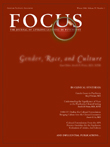Quick Reference for Anxiety Disorders
| Personality disorder, such as avoidant, schizoid, paranoid |
| Axis I paranoid disorder, such as paranoid schizophrenia or paranoid delusional disorder |
| Depression-related social withdrawal secondary to anhedonia or feelings of defectiveness |
| OCD-related fears exacerbated in social settings (e.g., contamination) |
| Panic disorder with phobic avoidance not limited to social situations |
| Deficits or impaired social skills associated with schizophrenia and related disorders |
| Body dysmorphic disorder with secondary social phobia |
OCD=obsessive-compulsive disorder
| Hyperreactivity of the locus coeruleus |
| Decreased GABA-benzodiazepine receptor complex binding |
| Dysregulated serotonergic modulation |
| HPA axis dysregulation |
| Hypersensitive brain stem carbon dioxide chemoreceptors |
| Hypersensitive conditioned fear network centered in the amygdala |
| Moderate genetic component |
GABA=gamma-aminobutyric acid, HPA=Hypothalamic-pituitary-adrenal
| Interoceptive exposure (to the somatic cues of panic attacks) |
| Situational exposure (to the settings that are phobically avoided) |
| Cognitive restructuring |
| Breathing retraining |
| Applied relaxation training |
| Exposure |
| Cognitive restructuring |
| Breathing retraining |
| Applied relaxation training |
| Cognitive restructuring |
| Exposure (imaginal and/or in vivo) |
| Social skills training (modeling, rehearsal, role-playing, practice) |
| Graded exposure (imaginal and/or in vivo) |
| Flooding |
| Response prevention |
| Cognitive restructuring |
A. Marked and persistent fear that is excessive or unreasonable, cued by the presence or anticipation of a specific object or situation (e.g., flying, heights, animals, receiving an injection, seeing blood). B. Exposure to the phobic stimulus almost invariably provokes an immediate anxiety response, which may take the form of a situationally bound or situationally predisposed panic attack. Note: In children, the anxiety may be expressed by crying, tantrums, freezing, or clinging. C. The person recognizes that the fear is excessive or unreasonable. Note: In children, this feature may be absent. D. The phobic situation(s) is avoided or else is endured with intense anxiety or distress. E. The avoidance, anxious anticipation, or distress in the feared situation(s) interferes significantly with the person’s normal routine, occupational (or academic) functioning, or social activities or relationships, or there is marked distress about having the phobia. F. In individuals under age 18 years, the duration is at least 6 months. G. The anxiety, panic attacks, or phobic avoidance associated with the specific object or situation are not better accounted for by another mental disorder, such as obsessive-compulsive disorder (e.g., fear of dirt in someone with an obsession about contamination), posttraumatic stress disorder (e.g., avoidance of stimuli associated with a severe stressor), separation anxiety disorder (e.g., avoidance of school), social phobia (e.g., avoidance of social situations because of fear of embarrassment), panic disorder with agoraphobia, or agoraphobia without history of panic disorder. |
| Specify type: |
| Animal type |
| Natural environment type (e.g., heights, storms, water) |
| Blood-injection-injury type |
| Situational type (e.g., airplanes, elevators, enclosed spaces) |
| Other type (e.g., fear of choking, vomiting, or contracting an illness; in children, fear of loud sounds or costumed characters) |
| Anemia |
| Arrhythmias |
| Angina |
| Asthma |
| Early dementia |
| Fibromyalgia |
| Gastroesophageal reflux disease |
| Hyperparathyroidism |
| Hyperthryroidism |
| Hypoglycemia |
| Irritable bowel syndrome |
| Mitral valve prolapse |
| Obstructive lung disease |
| Parkinson’s disease |
| Paroxysmal atrial fibrillation |
| Pheochromocytoma |
| Pulmonary embolus |
| Substance abuse/withdrawal (including narcotics, benzodiazepines, and beta-blockers) |
| Seizure disorders |
| Supraventricular tachycardia |
| Vestibular dysfunction |
| Axis I |
| With obsessive-compulsive features |
1. Major depressive disorder (with “obsessive” rumination) 2. Delusional disorder (somatic obsessions) 3. Body dysmorphic disorder 4. Specific or social phobia 5. Hypochondriasis 6. Eating disorders 7. Schizophrenia 8. Other disorders with “compulsive” symptomatology (trichotillomania, paraphilias, pathological gambling, substance abuse) |
| With anxiety |
1. Panic disorder 2. Posttraumatic stress disorder 3. Generalized anxiety disorder |
| Axis II |
1. Pervasive developmental disorders 2. Obsessive-compulsive personality disorder |
| Late onset (after 45 years) |
| Evaluate for neuromedical illness: history (especially family history and exposure to environmental toxins), neuroexamination, basic clinical workup, and neurodiagnostics as indicated |
1. Neurodegenerative (e.g., Huntington’s chorea) 2. Traumatic (rare anecdotal reports) 3. Neoplastic and vascular |
Information & Authors
Information
Published In
History
Authors
Metrics & Citations
Metrics
Citations
Export Citations
If you have the appropriate software installed, you can download article citation data to the citation manager of your choice. Simply select your manager software from the list below and click Download.
For more information or tips please see 'Downloading to a citation manager' in the Help menu.
View Options
View options
PDF/EPUB
View PDF/EPUBGet Access
Login options
Already a subscriber? Access your subscription through your login credentials or your institution for full access to this article.
Personal login Institutional Login Open Athens loginNot a subscriber?
PsychiatryOnline subscription options offer access to the DSM-5-TR® library, books, journals, CME, and patient resources. This all-in-one virtual library provides psychiatrists and mental health professionals with key resources for diagnosis, treatment, research, and professional development.
Need more help? PsychiatryOnline Customer Service may be reached by emailing [email protected] or by calling 800-368-5777 (in the U.S.) or 703-907-7322 (outside the U.S.).

